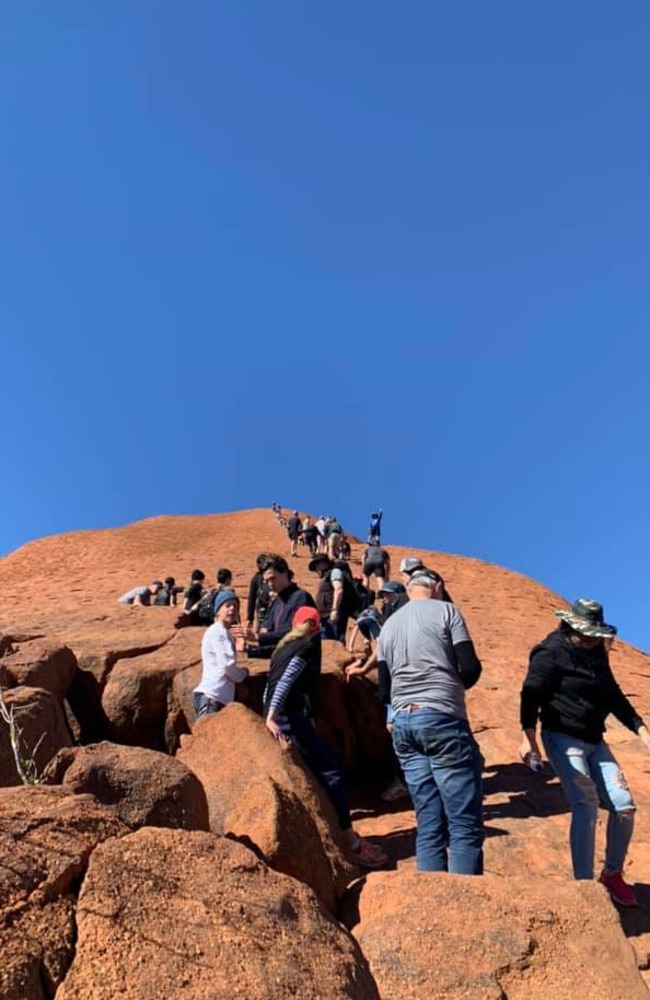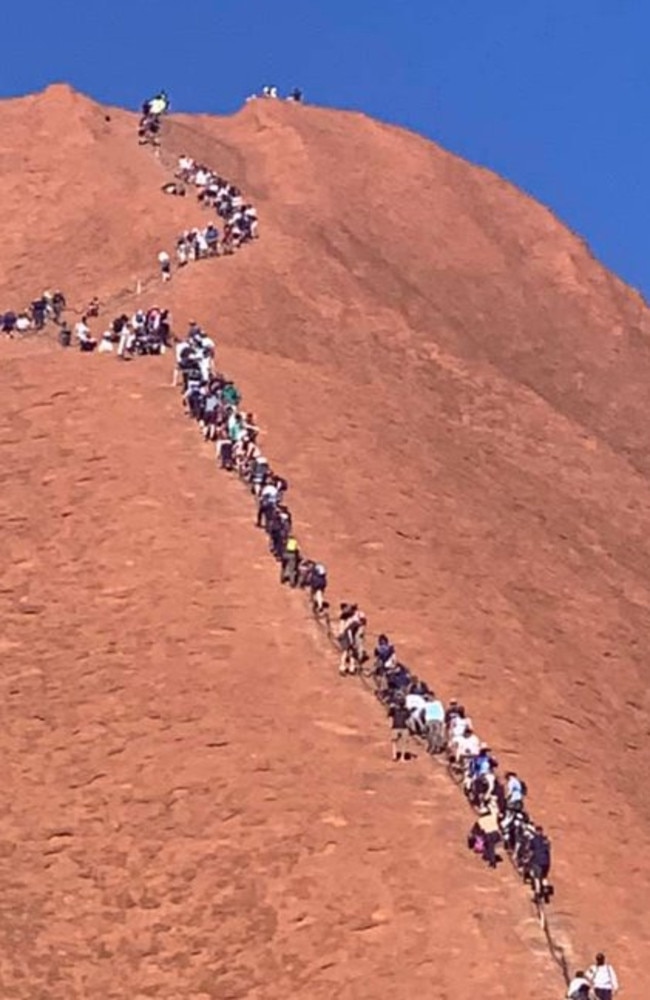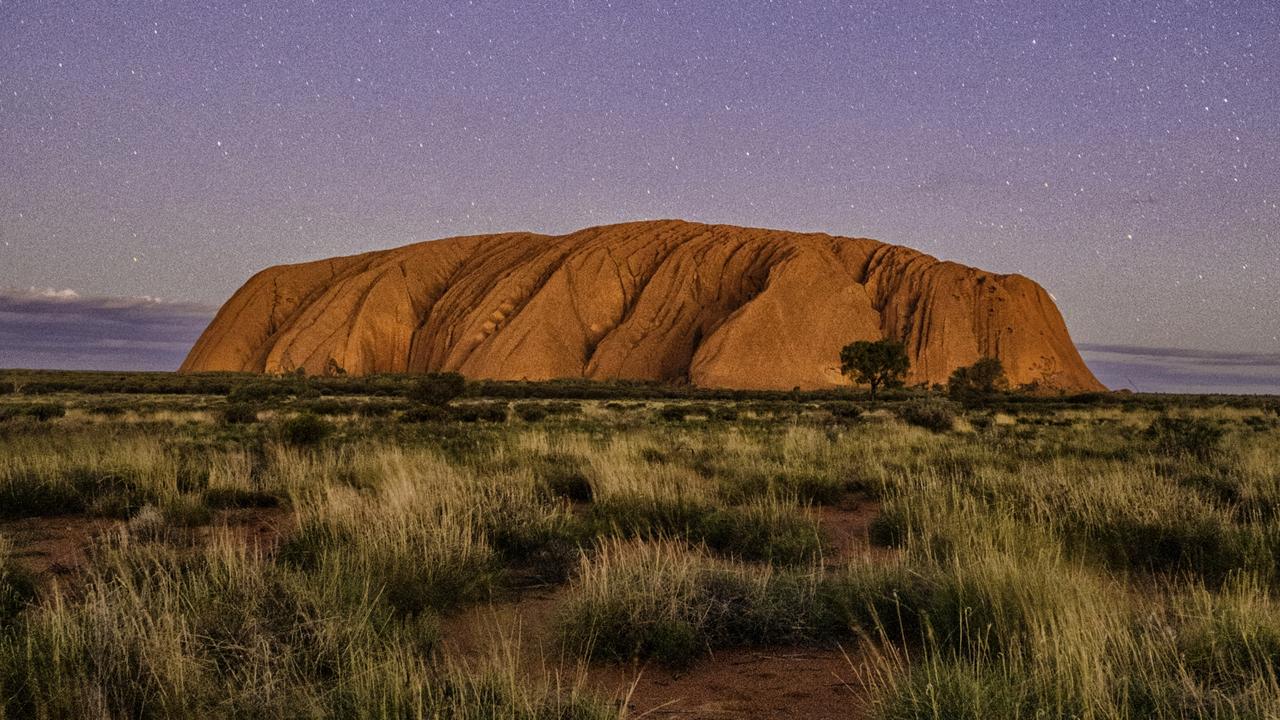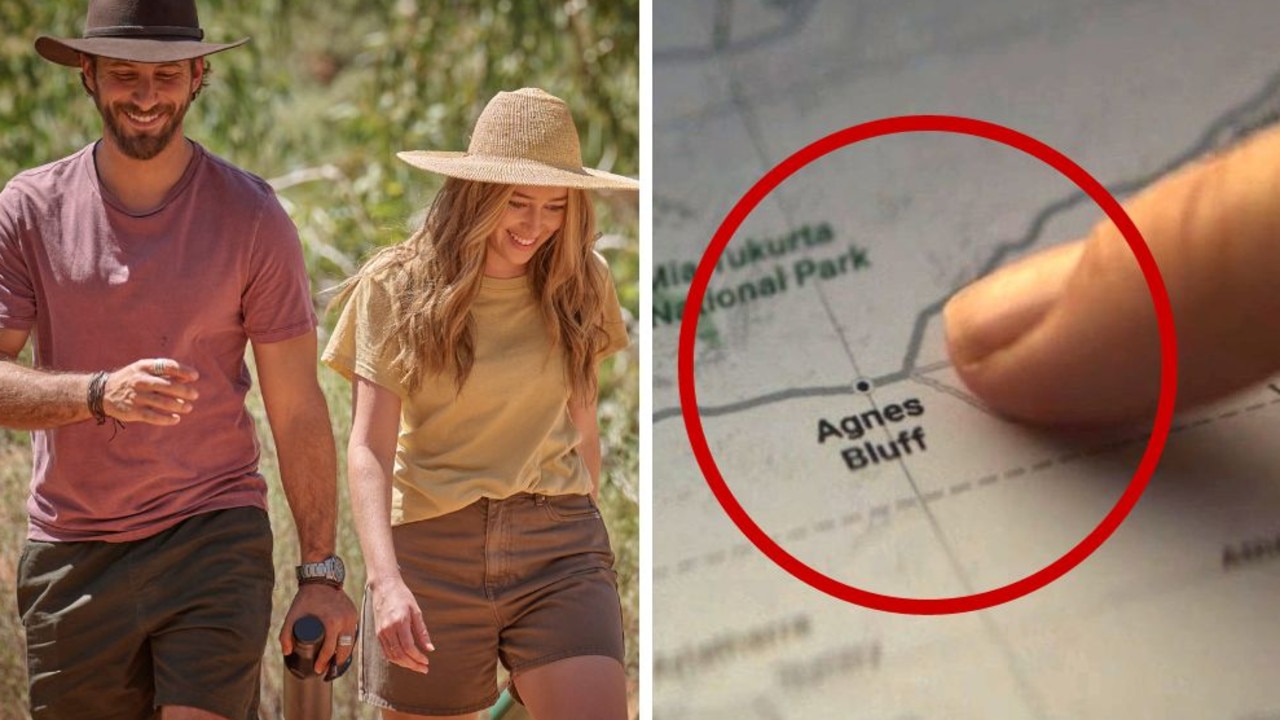Uluru October closure creates new headache
Hundreds of people are desperately trying to climb Uluru before the controversial climb is finally banned. Then there is a new problem to fix.
It’s three months until the climb up Uluru is closed for good, an overwhelmingly-praised move that Aboriginal traditional owners have been waiting on for decades.
But there’s still a long way to go before Uluru all signs of the climb are dismantled and the monolith is returned to its original and natural appearance.
A chainhold was added in 1964 and extended in 1976 to make the hour-long climb up the steep cliff easier for tourists.
The chainhold was secured with 138 steel posts, drilled 30cm down into the rock face and secured with concrete and epoxy resin.
The posts have survived storms, wind and the sweltering conditions for more than 50 years and removing them is going to be a sensitive nightmare.

The mammoth job, advertised by Parks Australia earlier this year, came with plenty of warnings.
Contractors were cautioned on difficulties with going to the toilet, working in the Northern Territory’s sweltering conditions and access to drinking water.
In tender documents, the government agency warned there was “no power or portable water” on Uluru worksites.
“Accessing toilets may be a 45 to 60 minute return trip from the top of the climb chain and even longer from the area on top of Uluru with the white dashed painted lines and the cairn,” the documents read.
The rock has been scarred with painted guidelines and arrows stretching up the entirety of Uluru.
RELATED: Anger as tourists swarm Uluru as climb closure date approaches
The monolith also has four designated helicopter landing pads, three of which are big enough to move equipment.
An octagonal cairn, made up of hundreds of rocks, also sits at the top of Uluru.
In October, all of it will begin to go in a job Parks Australia estimates will be finished by January 2020.
In a tender submitted by the Director of Parks Australia earlier this year, the government agency gave contractors a brief insight into what would be required of them if they were take on the difficult job of dismantling the climb.

The 138 posts will need to be removed “in a manner that does not leave any visible evidence of the posts above the natural rock surface of Uluru and avoids or minimises any damage to the rock surface of Uluru,” the document states.
“The remaining holes must be able to be filled in with a durable/long lasting material that is level with and blends into the existing rock surface of Uluru (i.e. its texture and colour) and does not leave any part of the steel posts exposed above the surface of the rock.”
The painted guidelines stretching up the face of the rock will also need to be removed “as far as is possible … using a method that minimises damage to the rock surface and doesn’t use toxic chemicals”.
“This does not include removing minor/small areas of paint for lines that have faded or been worn out.”
The scarred side of the rock, where thousands of shoes have scuffed a very obvious path up Uluru, will not need to be fixed by the contractors.
The chain connecting the posts can also be cut but the length of the chains “must be agreed”.
The cairn must also be removed but remain in one piece and also can’t be damaged.
Everything man-made on the rock face will be brought back down and kept for a museum, or educational display, the documents read.

‘NOT ONLY DO PEOPLE CLIMB IT, THEY DEFECATE AND URINATE ON IT’
In November 2017, the Uluru-Kata Tjuta National Park Board started the countdown of when the climb would be closed permanently.
The date of October 26, 2019 was put forward — a significant day for the Anangu indigenous community because it was that day in 1985 that the government returned ownership of the land to the traditional owners.
But since setting the date, the number of people climbing Uluru has skyrocketed.
Before park management announced it was closing the climb, around 140 people were climbing Uluru each day.
Since then, the number has doubled and at times tripled to 300-500 daily visitors.
On Wednesday, a photo taken at the base of Uluru went viral after it showed hordes of tourists snaking up the rock face.
The Anangu traditional land owners say tourists are leaving rubbish bins overflowing, illegally dumping human waste from caravans along the roadside, and have made Uluru-Kata Tjuta National Park the “busiest they’ve seen it”.
“There’s cars parked for one kilometre on either side of the road leading up to the carpark at the base,” an unnamed photographer who supplied the photo to the ABC said.

Traditional landowners are devastated by the masses rushing to climb Uluru before the cut-off date despite it long being common knowledge the act is deeply offensive.
“It makes me sick looking at this photo at the disrespect and disregard shown for the traditional owners’ wishes,” a spokesperson from the Darug Custodian Aboriginal Corporation said.
“Not only do people climb it but they defecate, urinate and discard nappies and rubbish on it.
“I for one cannot wait for the climb to be permanently closed and our sacred lore, culture and traditions to be acknowledged and respected.”
A sign sits at the base of the climb, imploring visitors to reconsider their need to scale the rock.
“We, the traditional Anangu owners have this to say,” the sign reads.
“The climb is not prohibited but we ask you to respect our law and culture by not climbing Uluru. We have a responsibility to teach and safeguard visitors to our land. The climb can be dangerous. Too many people have died while attempting to climb Uluru.”
At least 35 people have died while attempting to climb Uluru, and many others have been injured.
From 2011 to 2015, the climb was closed 77 per cent of the time due to dangerous weather conditions or cultural reasons.




